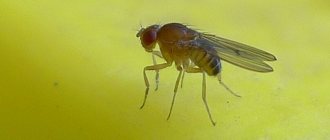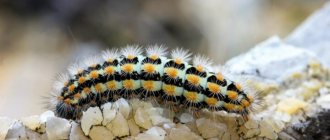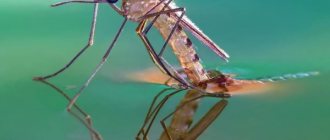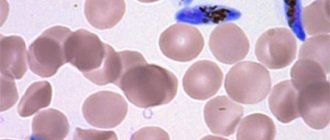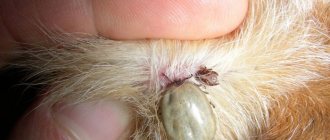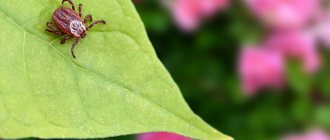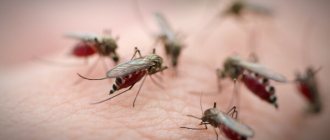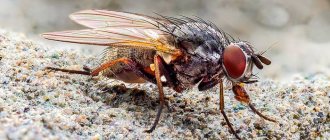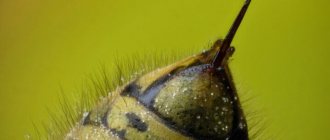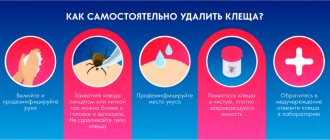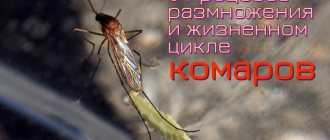Ixodid ticks (family Ixodidae) are a small group of arachnids. This family is one of the most studied, since it includes the largest parasitic ticks of humans and domestic animals. The family has more than 600 species worldwide, with about 60 recorded in modern Russia.
All ixodid ticks are temporary parasites . They are called temporary because they are on the host’s body not throughout life, but only during feeding (feeding on blood is critical for the reproduction process of these mites, since additional nutrition is not typical for them).
The increased interest in this family is primarily due to the fact that its representatives carry dangerous diseases such as encephalitis, typhus, and tularemia. From an epidemiological point of view, the taiga tick (lat. Ixodes persulcatus) and the dog tick (lat. Ixodes ricinus), which are widespread in Russia and are carriers of tick-borne encephalitis, are of greatest interest.
We’ll talk further about how these ticks reproduce….
Distribution of ticks and movement patterns.
Traveling on the plumage or fur of birds and animals, they can significantly expand their habitat. But let us note that in his entire life he is able to overcome no more than a few meters under his own power. Ticks only crawl, very slowly. They don't fly or jump. They crawl no more than 10 meters in their entire life. The height of their habitat is no more than a meter from the ground. Clinging to clothing or skin with their hind legs, they move towards the victim of their attack. Next, the tick moves slowly in search of a place to bite. Favorite places are hairy areas of the skin. Life expectancy is up to 4 years, and without food from 1 to 3 months.
General information
The arachnid has many varieties and is distributed everywhere. Adults rarely reach a size of 3 mm, average values vary between 0.1−0.5 mm. The female tick does not have a long body. She has it even a little shorter than the male. Some people mistakenly believe that tick larva and nymph are two names for the same developmental stage.
Adults have 4 pairs of legs, while juveniles have fewer. Depending on the structure of the body, leathery and hard varieties are distinguished. The former are characterized by complete fusion of the head and chest, breathe through the skin and trachea, the latter have a shell, and the head is movably attached to the body, breathing is carried out using special spiracles.
A distinctive feature of the arachnid is the absence of eyes. They navigate in space through a developed sensory apparatus, which allows them to sense the smell of the victim at a distance of up to 10 meters.
There is a classification depending on the way arachnids feed. There are two large groups:
- Saprophages feed on organic debris. They are considered useful and participate in the formation of humus. There are separate subspecies that harm plants, agricultural crops, flour and grain reserves. Saprophages include dust, arachnoid, flour, granary, subcutaneous, and ear saprophages. The last two species parasitize the human body and cause significant discomfort.
- Predators parasitize plants, animals, and humans. When attached to the victim, they crawl under the skin with the help of their paws and detach only after saturation. They can remain on the victim for quite a long time. The bite can be dangerous.
Both species are often found in human homes and at work, cause significant harm, and are difficult to remove.
What to do? First aid.
The best solution is to go to the hospital immediately. Do not crush the tick or tear it away from the bite site. The tick must be completely removed from the skin, preferably with its hypostome.
The respiratory organs of the parasite are located on the tail. Therefore, immersing the tick body under a layer of vegetable oil for 5 minutes will require immediate evacuation of the parasite due to lack of oxygen. By loosening the grip of your hypostome, you can carefully remove it with tweezers, making slow rotational movements.
You can light a candle and drip melted wax onto the tick's body. The effect will be similar.
Be sure to treat the affected area with an antiseptic (hydrogen peroxide, iodine, etc.):
Be sure to save the tick (put it in a glass jar with damp cotton wool and place it in the refrigerator); it is necessary to conduct a study in the laboratory to determine whether it was an infected tick or not. The severity of the consequences for the bitten person or animal and further therapy depend on this.
After a tick bite, you must go to a medical center or call an ambulance. Further treatment should be prescribed by a professional doctor.
Other types
There are other types of parasites. The scabies mite is a common one. Causes scabies in humans and animals. Life expectancy is no more than 6 weeks. During this period, the female can lay many eggs, which turn into nymphs quite quickly.
Ear mites do not pose a threat to humans. It mainly harms animals. It lives in the auricle, feeds on its secretions, causing severe itching, irritation and inflammation.
Scratch infections often occur. The dust species often lives in blankets and pillows. It does not parasitize humans; it feeds on dead skin cells, accumulations of dust and fluff. Life expectancy is 4 months. During a season, a female can lay more than 35 thousand eggs. It often provokes the development of asthma in a person.
Spider mites are safe for animals and humans; they are herbivores and feed on plant juices. The only danger of this species is the spread of gray rot, which is destructive to plants. The marine species does not threaten animals or humans; it parasitizes marine life. Lives in salt and fresh water, in stagnant bodies of water. The predatory tick poses a danger to any other species, since it feeds on its relatives. Sometimes such individuals are specially introduced into greenhouses to destroy the harmful spider species.
The granary or flour species does not pose a threat to humans, unlike the blood-sucking species. It is considered a serious pest; it can destroy grain reserves, contaminating them with waste products. The pasture parasite is dangerous to humans and animals. Lives in forests, sometimes in the steppe, near populated areas. Carries serious diseases, for example, plague, fever, encephalitis, brucellosis. Animals are also threatened by dog ticks, which live everywhere and cause serious discomfort.
Animals on which forest ticks breed
Dog and taiga ticks use a wide range of hosts. Moreover, both warm-blooded and cold-blooded animals can become victims. These are large domestic and wild artiodactyls, horses, sheep, and wild boars. Smaller animals: dogs, cats, badgers, hares and others.
The photo below shows an example of the parasitism of a large number of ticks on the body of an elk:
The greatest spectrum of parasitism is observed on small mouse-like rodents, including in their burrows: dormice, voles, wood mice. Ticks also did not deprive insectivores such as hedgehogs and moles of their attention. Among reptiles, parasitism has been observed on lizards and snakes. The favorite prey of nymphs are birds leading a sedentary lifestyle.
The development of encephalitis ticks occurs according to the three-host type. This means that during the entire life cycle, the tick feeds on three different, systematically, animals.
The larvae choose a smaller host. They can be found en masse on mice, squirrels, and hedgehogs. Larvae also tend to feed on reptiles and sometimes amphibians, which nymphs already avoid. Nymphs choose a larger host - for example, a dog, cat, or various birds. The taiga tick prefers young hazel grouse.
On a note
Nymphs in ticks also perform a dispersal function. For this they use various animals. By clinging to their fur, ticks can move long distances. They also migrate with flying birds, so nymphs may end up in habitats that are unusual for them. This phenomenon is called zoochory.
Large varieties
These are the representatives whom we are accustomed to seeing in the world around us and are accustomed to fear. In the central zone of our country, there are predominantly ixodid types, which are carriers of many serious diseases of viral and bacterial etiology, both for humans and domestic animals. Here is a far from complete list of diseases that these small arachnids can infect:
- tick-borne encephalitis,
- rickettsioses,
- Lyme disease,
- borreliosis,
- canine piroplasmosis,
- bartenellosis.
Without proper treatment, most of these diseases have a poor prognosis.
Infection occurs at the moment of the bite, when the parasite digs into the skin and begins to suck blood, which it does not need for nutrition, but so that the fertilization process is much more efficient, so only females bite. The causative agents of the disease are found in the saliva of the tick, with which they penetrate the wound and begin their development.
Nutrition of larvae
Where can tick clutches be located?
- Most often - in nature, on soil or on plants.
- Less often – on the host’s body. In this case, the larvae will also feed on his blood.
The hatched larvae begin to look for a victim, and often there are several of these young ticks per host. Feeding takes approximately 3-4 days, after which the larvae leave the host, once again entering the natural environment. Here they molt, turning into nymphs, then again find a host - their feeding will continue for about 7 days, after which the nymphs again leave their prey, turning into an imago (adult) or leaving for the winter.
This is the process of tick reproduction.
The figure schematically shows the stages of a tick bite
However, it must be said that the pliers are able to regulate the depth of immersion. While conducting research, scientists noticed that some types of ticks do not penetrate the victim’s tissues the entire length of the mouthparts, but only partially, and stop when they reach the branching of blood vessels. It was noted that this feature is inherent in species that often change hosts, and is a kind of protection of the chelicerae from possible mechanical damage when the skin is thick. Indeed, in the event of an injury, the likelihood of the next meal will be in question.
Video: close-up of a tick bite
Like raisins from compote
“We brought a horse from near Rzhev at the May festival,” says Pyotr Kamenchenko, deputy editor-in-chief of Lenta.ru, about his personal experience with ticks. — In the Staritsky district of the Tver region, I still have a house left by my grandfather. We bought a nice 11 month old foal. He raised his mane, and there was horror! Hundreds of sucked ticks look like raisins from yesterday’s compote! We called horse owners we know - they say it’s the same everywhere and no repellents help, just comb it out and pick it out with your hands... We decided to go to a neighboring village for a visit, dressed according to science: in everything light, tucked everything in, laced it up, sprayed ourselves with chemicals... We walked through an abandoned field , I looked, and the child had seven pieces running up his jeans, he shook them off. Thirty meters later - five more... I spent my entire childhood in these places and then - in the 1970s - 1980s - I only heard stories about ticks. And now something unreal is happening!
Having inserted its proboscis, the tick begins to inject saliva into the host’s body...
Photo: Research Institute of Disinfectology of Rospotrebnadzor
Here's another example. A friend of mine bought a Boerboel puppy and at the beginning of June took him to a dacha near Moscow, where he left him with his old mother until the next weekend. Run freely. And when he returned, the inner sides of the dog’s ears were covered with clusters of sucking mites, so that there was no free space left. The dog won't go to the dacha anymore. Personally, on weekends I walk with my dog in Moscow’s Serebryany Bor park. Despite the anti-tick collar and treating the dog with a special spray, after each walk I remove about five running ticks and a couple of attached ones.
What's happened? After all, fifteen years ago in Moscow and the surrounding regions, ixodid ticks, or, as they are more often called by people, encephalitis ticks, were exotic, and no one in the city had ever heard of their bites. And what is going on in the Kostroma, Yaroslavl, Vologda, Kirov, Perm, Sverdlovsk regions, the Komi-Permyak Autonomous Okrug, the Mari El Republic, the Udmurt Republic - historically abounding in ticks? Not to mention the Tomsk region - the absolute champion in the number of ticks and diseases transmitted by them? The answer is hell.
In the Tomsk region, even 20 years ago, ticks attacked people twice as often as anywhere else in Russia (a thousand people fell ill with Lyme disease in 1996), but this year the number of attacks has at least tripled. According to Rospotrebnadzor of the Tomsk Region, on May 4, 2016, 1,902 people came to seroprophylaxis centers with complaints of a tick bite. For comparison, on the same day—May 4, but a year earlier—only 610 people who had been bitten applied to the same medical institutions. And this is not a record. On May 20, 2016, 4,203 tick victims contacted Tomsk prevention centers. Can you imagine what happens to the dogs and horses there?
Months of tick activity
Ticks parasitize in nature from the beginning of April to the end of September, but their greatest activity in the area of our country is observed from April to July. From the second half of summer and into autumn, the chance of a parasite attack decreases, but the likelihood of developing a serious disease after a possible bite increases - due to the accumulation of a greater concentration of infection in the body of the pest.
The awakening of tick-borne bloodsuckers occurs gradually and geographically unevenly. The most obvious harbinger of the appearance of pests is a stable temperature above 10 degrees. In warm, sunny areas, parasites can wake up much earlier than the allotted time for a particular area.
Ticks really don’t like too hot or very rainy weather, so during this period of time their activity noticeably decreases.
During a day with favorable weather conditions, the greatest aggressiveness is observed in the morning, from 8 to 11 a.m., and in the evening, from 5 to 8 p.m.
On cloudy days and during warm rain, their ability to attack does not change and remains approximately at the same level as in good weather.
Tick prevention products
There are 3 types of prophylactic agents:
- Repellent (scaring),
- Acaricidal (killing),
- Insecticidal-repellent (combined action - killing and repellent).
Not everything presented in stores is safe. And since we will be applying the drug to ourselves and our clothes, it is very important that it does not harm our health.
We described in detail what substances should be avoided in insect repellents In it you will also find a selection of natural repellents that are suitable for use by the whole family.
Most natural repellents are made with essential oils. They are absolutely harmless for human use, but not at all attractive and even frightening to blood-sucking parasites.
Essential oils for tick prevention:
- tea tree,
- eucalyptus,
- mint,
- lemon
- juniper,
- pink tree,
- thyme,
- grapefruit,
- Texas cedar,
- geranium,
- carnation
- rosemary,
- lavender,
- hit,
- palmarosa.
Most often, one or more of these essential oils can be found in anti-tick formulations. But such a drug can be made at home with your own hands. Based on essential oils, alcohol and water, you will get an excellent spray that will repel not only ticks, but also other parasitic and blood-sucking pests.
Stages of development
Ixodid ticks have several stages of development - from egg to adult, which directly depend on their nutrition. During its entire life, a tick eats only four times. Stages of development:
- Larva: the shell is thin, sometimes translucent, but depends on the degree of filling with blood, size - up to one millimeter. A special distinguishing factor is the presence of three pairs of legs (an adult has four) and the absence of a genital opening. Also, in the tick larva, the anterior part of the body is covered with a dorsal shield. These are compacted segments of the chitinous cover of the tick. When the larva is sufficiently saturated with blood, and this takes it from three to six days, it enters a resting stage (like the pupa of butterflies), during which it passes into the next stage.
- Tick nymph. If the larva is a child, then the nymph is a teenager in the world of ticks. It is larger in size, up to two millimeters in length, more mobile when moving and has an almost formed reproductive system, but without an outlet. The tick nymph already has four pairs of legs. Considering that ticks live for about two years, most of them overwinter in the nymph stage.
- Imago is a sexually mature adult tick. The tick again turns from a nymph into an adult after complete satisfaction of hunger: having drunk blood, it begins the transformation in the definitive stage and, having completed it, looks for a partner to complete the most important mission - mating and laying eggs. Hungry adults are 6-8 mm in size, while well-fed adults filled with blood can increase to three centimeters.
Can a nymph carry encephalitis?
A tick of any species belonging to the ixodid family (the family of parasitiforms) is a carrier and distributor of all the viruses that it carries on its body. And the nymph, as is already known, has the same degree of possibility of infection as an adult tick. Accordingly, it can also infect a person with dangerous diseases through a bite.
The virus that causes the disease is transmitted from the tick nymph to humans through the saliva of the parasite and quickly spreads throughout the body through the circulatory system. If you are bitten, you need to act quickly and purposefully.
